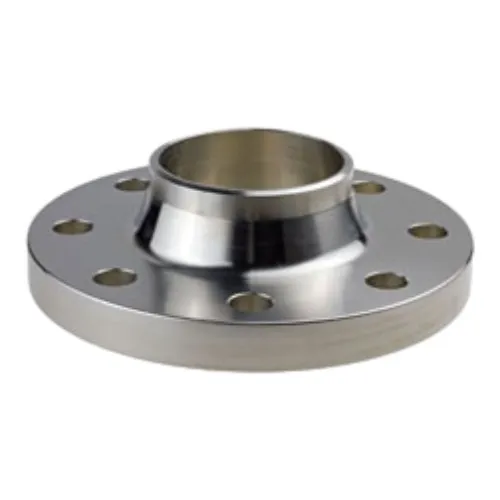-
Cangzhou Yulong Steel Co., Ltd.
-
Phone:
+86 13303177267 -
Email:
admin@ylsteelfittings.com
- English
- Arabic
- Italian
- Spanish
- Portuguese
- German
- kazakh
- Persian
- Greek
- French
- Russian
- Polish
- Thai
- Indonesian
- Vietnamese
- Zulu
- Korean
- Uzbek
- Hindi
- Serbian
- Malay
- Ukrainian
- Gujarati
- Haitian Creole
- hausa
- hawaiian
- Hebrew
- Miao
- Hungarian
- Icelandic
- igbo
- irish
- Japanese
- Javanese
- Kannada
- Khmer
- Rwandese
- Afrikaans
- Albanian
- Amharic
- Armenian
- Azerbaijani
- Basque
- Belarusian
- Bengali
- Bosnian
- Bulgarian
- Catalan
- Cebuano
- China
- China (Taiwan)
- Corsican
- Croatian
- Czech
- Danish
- Esperanto
- Estonian
- Finnish
- Frisian
- Galician
- Georgian
- Kurdish
- Kyrgyz
- Lao
- Latin
- Latvian
- Lithuanian
- Luxembourgish
- Macedonian
- Malgashi
- Malayalam
- Maltese
- Maori
- Marathi
- Mongolian
- Myanmar
- Nepali
- Norwegian
- Norwegian
- Occitan
- Pashto
- Dutch
- Punjabi
- Romanian
- Samoan
- Scottish Gaelic
- Sesotho
- Shona
- Sindhi
- Sinhala
- Slovak
- Slovenian
- Somali
- Sundanese
- Swahili
- Swedish
- Tagalog
- Tajik
- Tamil
- Tatar
- Telugu
- Turkish
- Turkmen
- Urdu
- Uighur
- Welsh
- Bantu
- Yiddish
- Yoruba

Nov . 03, 2024 21:24 Back to list
ansi flange types
Understanding ANSI Flange Types A Comprehensive Overview
Flanges are crucial components in piping systems, serving as a method for joining pipes, valves, pumps, and other equipment. The American National Standards Institute (ANSI) establishes standardized dimensions, configurations, and material requirements for these flanges, ensuring compatibility and reliability across various applications. In this article, we will explore the different ANSI flange types, their applications, and key specifications.
ANSI Flange Standards
ANSI flanges are classified based on pressure ratings and sizes, commonly identified by the ANSI/ASME B16.5 and B16.47 standards. The pressure ratings are categorized by classes, such as Class 150, Class 300, Class 600, and so forth up to Class 2500. The higher the class, the greater the pressure the flange can withstand. For instance, Class 150 flanges are typically used in low-pressure systems, while Class 1500 flanges are employed in high-pressure applications.
Common ANSI Flange Types
1. Flat Faced Flanges (FF) These flanges have a flat sealing surface, making them suitable for joining to flat-faced machinery. They are often encountered in low-pressure applications and can be used with gaskets to provide a reliable seal.
2. Raised Face Flanges (RF) One of the most widely used flange types, RF flanges have a raised area around the bolt holes that enhances sealing capability. They are commonly used in high-pressure systems and can accommodate various gasket types, providing multiple options for sealing.
3. Ring Type Joint Flanges (RTJ) RTJ flanges feature a groove in the sealing face to hold a metal ring gasket. This design is ideal for high-pressure and high-temperature applications, providing a secure seal even under extreme conditions.
ansi flange types

4. Blind Flanges These flanges are solid discs with no opening, used to close the ends of pipes or other equipment. They are essential for pressure testing and maintenance, allowing easy access when needed.
5. Socket Weld Flanges These flanges are designed for piping systems where the pipe is inserted into the flange and welded. This type is commonly used in small-diameter, high-pressure piping applications due to its strength and reliability.
6. Lap Joint Flanges Used in conjunction with a stub end, lap joint flanges provide flexibility and ease of alignment. They are often employed in applications requiring frequent dismantling, such as in maintenance scenarios.
Applications of ANSI Flanges
ANSI flanges are integral to a variety of industries, including oil and gas, chemical processing, water treatment, and manufacturing. The ability to choose from various flange types and materials allows engineers to tailor their piping systems to meet operational demands, ensuring efficiency and safety.
Conclusion
In summary, ANSI flange types play a pivotal role in industrial piping systems. Understanding the specifications and applications of each flange type is essential for selecting the right components for specific requirements. By adhering to ANSI standards, engineers can ensure compatibility and enhance the performance and reliability of their systems, thus contributing to the overall success of their projects. Whether for pressure control, maintenance, or assembly, the right flange can make a significant difference in the functionality of piping systems.
Latest news
-
ANSI 150P SS304 SO FLANGE
NewsFeb.14,2025
-
ASTM A333GR6 STEEL PIPE
NewsJan.20,2025
-
ANSI B16.5 WELDING NECK FLANGE
NewsJan.15,2026
-
ANSI B16.5 SLIP-ON FLANGE
NewsApr.19,2024
-
SABS 1123 FLANGE
NewsJan.15,2025
-
DIN86044 PLATE FLANGE
NewsApr.19,2024
-
DIN2527 BLIND FLANGE
NewsApr.12,2024
-
JIS B2311 Butt-Welding Fittings LR/SR 45°/90° /180°Seamless/Weld
NewsApr.23,2024











